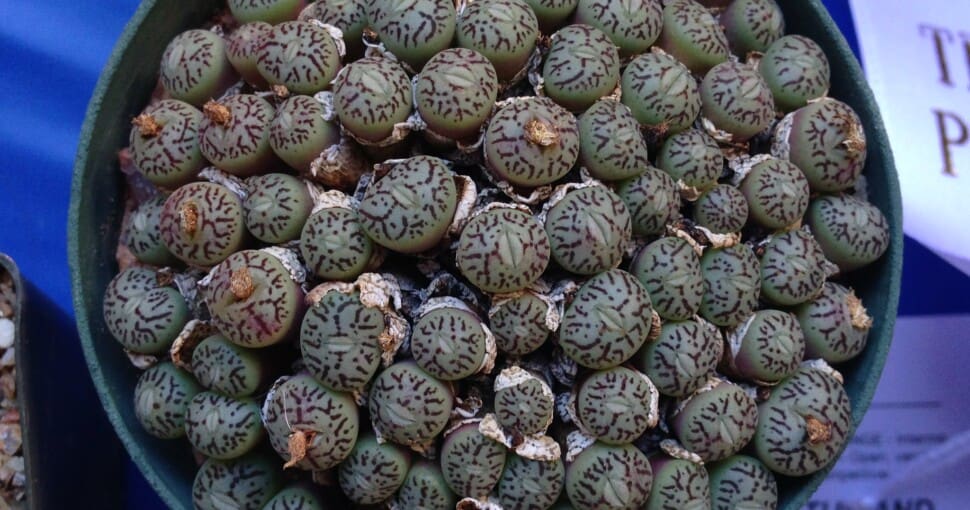You may have heard people say that eyes are the gateway of the soul, but using your eyes is how you create most of your memories. Eyes are as unique as people are and have all shapes and colors. The colorful part of an eye is called the iris, and it is usually this part of the eye that people notice.
Contents
Eyes are incredibly complex organs. For instance, an iris has more than two hundred and fifty unique characteristics, while a fingerprint only has forty. The gift of sight is indeed something to be grateful for. To understand just how incredible the eye is, if the eye were a digital camera, it would have a five hundred- and seventy-six-megapixel camera capability.
Your eye can also differentiate roughly ten million different colors. In fact, the only organ that is more complex than the human eye is the brain. Equipped with these masterpieces of sight, let’s look at the magical floral world around us and see what plants may look like eyes.
Related: 5 Plants That Look Like Lips | 9 Plants That Look Like People
1. Eyeball Plant
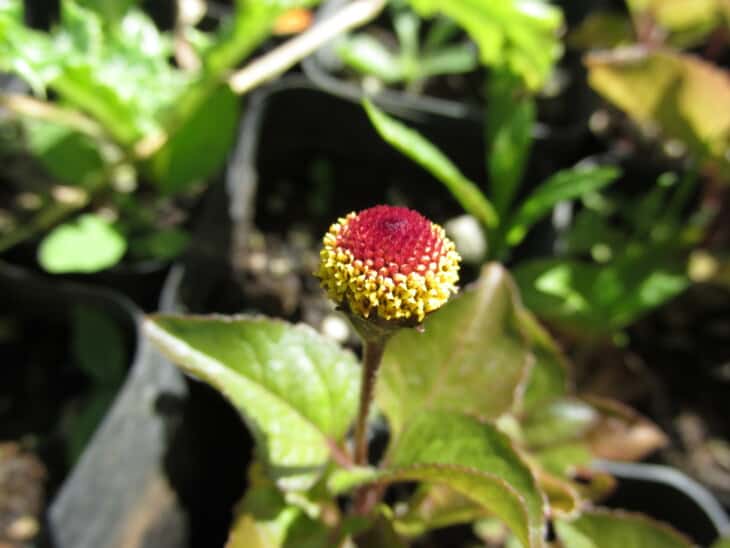
The eyeball plant (Acmella oleracea) is called the electric daisy, buzz buttons, and toothache plant. Eyeball plants are members of the Asteraceae plant family, and their origins can be traced to Brazil. Looking at the flower, it is easy to see why it is called an eyeball plant.
The compound flowers are round to oval shaped. The lower disc florets are yellow, while the florets at the pinnacle of the flower are a deep red color. The eyeball plant is mostly cultivated in gardens as an ornamental plant but is also planted as a food and medicine plant.
In tropical areas, the eyeball plant grows as a perennial, but it grows as an annual plant in more temperate climates. The leaves and flowers are eaten in salads in small quantities, or leaves are combined with garlic and chili in stews.
Chewing the flower and keeping it on a sore tooth numbs the mouth and reduces swelling. Science has backed these claims, and it is said that the plant is as effective as conventional painkillers.
2. Black-Eyed Susan Vine
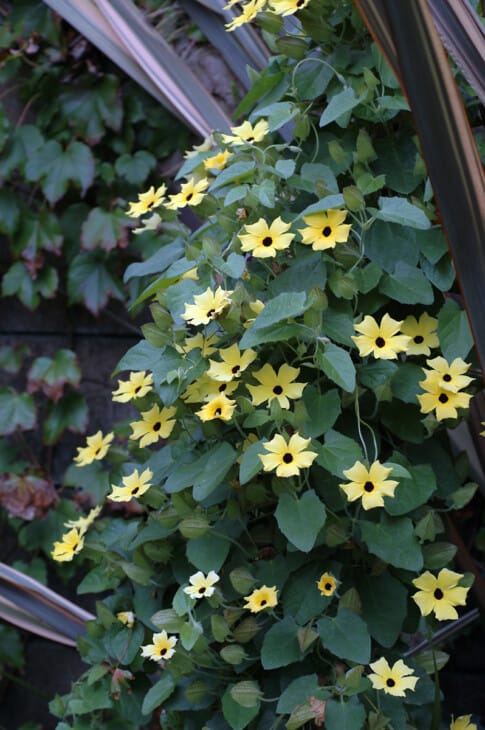
The name black-eyed Susan is used to refer to more than one flower. Black-eyed Susan vine (Thunbergia alata) is also called clock vine and is a member of the Acanthaceae plant family. Black-eyed Susan vines are native to Africa, Asia, and Madagascar.
Flowers of this vine are trumpet-shaped and range in color from light cream colors to bright orange. Regardless of the color of the corolla, the flowers always have a black center, giving rise to the name. Black-eyed Susan vines grow as long as thirteen feet with many side branches. The vine grows best if trellised, providing a beautiful display when flowers bloom in summer.
In warmer regions, the black-eyes Susan vine will flower year-round. The vine has heart-shaped leaves. And grows to sell in full sun or in semi-shaded areas. Black-eyed Susan vine seed casings look almost like a bird’s head with a sharp beak. The plant produces many seeds, causing the vine to self-seed and ensure that new plants pop up in your garden next season.
3. Doll’s Eyes
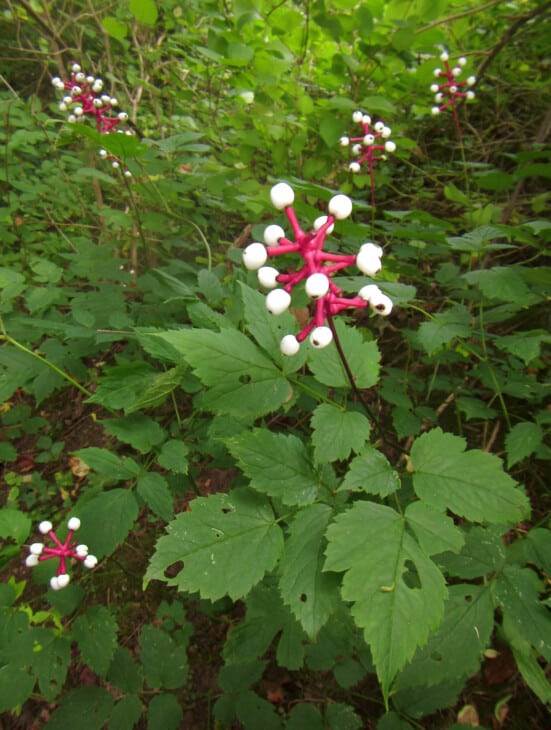
White baneberries (Actaea pachypoda) are commonly called doll’s eyes because of the unusual appearance of this plant’s berries. Doll’s eyes are native to North America and Canada, growing naturally in mixed forest settings.
Doll’s eyes leaves are bipinnately compound with green stems, and the white flowers are arranged on a flower stem about four inches long. The plant seems pretty unremarkable until the berries appear. The half-inch-sized berries are white with a distinctive black scar. The stems from which the berries grow become red as the fruit ripens, completing the impression of eyeballs.
The entire doll’s eye plant is toxic to humans, but the highest toxin concentration is present in the berries. Eating the doll’s eye berries affects the heart muscle and can cause the heart to stop beating. A number of birds are unaffected by these toxins and spread the seed when they eat the berries.
4. Redstem Dogwood
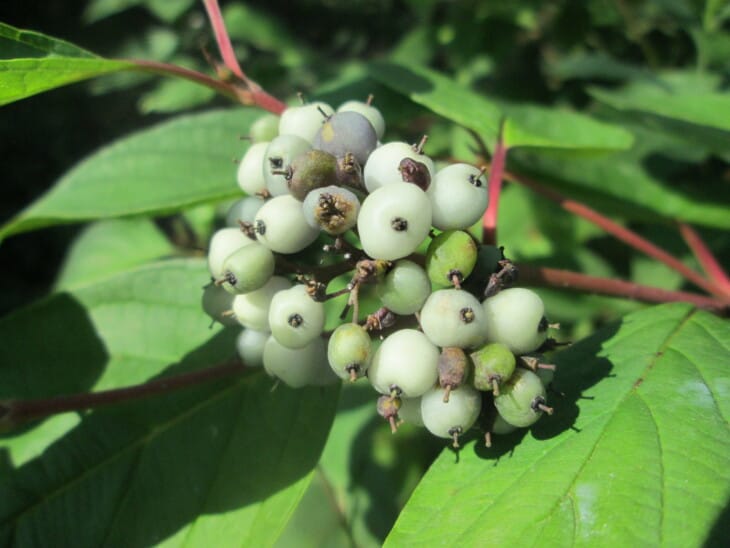
Redstem dogwood plants (Cornus sericea) are also called red-osier dogwood, or American dogwood. This shrub is native to North America, where it favors wetland areas and regions with high rainfall. The Redstem dogwood grows nine feet tall and up to ten feet wide. It is a deciduous plant with ovate green leaves in summer and bright orange to purple leaves in fall.
The flowers are carried in fragrant clusters in spring. However, the berries that ripen to a white color resemble eyes. The white berries with the black stigma scar grow on a red stem and closely resemble an eye.
The berries are edible and are a good food source for a wide range of birds. Planting a Redstem dogwood in the garden ensures plenty of animal life and a changing landscape throughout the year.
5. Button Plants
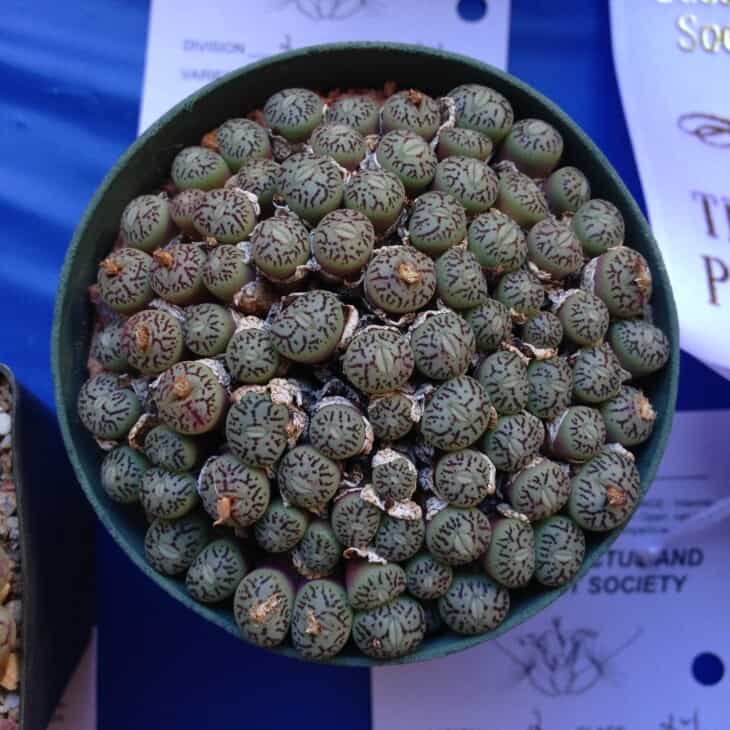
The button plant (Conophytum wittebergense) is a stemless succulent that only grows slightly more than one inch tall. This button plant is native to South Africa, but the unusual plant is sought after by collectors worldwide. These small plants form mats over time as they group together.
This Conophytum variety is round with a diameter of less than an inch. The grey-green plant body is marked with dark red lines and spots. There is a slit in the center of each plant where the flower develops in the rainy season. While these plants are beautiful with their unusual markings, they resemble a bloodshot eye.
Button plant flowers are small and white to cream-colored. The strongly scented flowers bloom at night. The scar formed when the flower drops off looks like the pupil of the bloodshot eye.
6. Owl Eyes
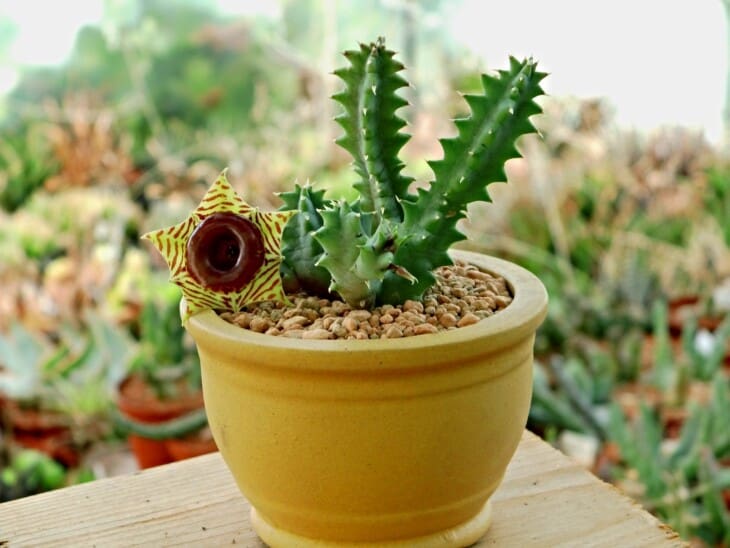
Owl eyes (Huernia zebrina) go by names like Lifebuoy Huernia, carrion flower, and little owl eyes. These plants are native to Namibia, South Africa, Mozambique, and Zimbabwe. These perennial succulents have grey-green colored stems with a tooth ridge pattern.
The flowers are star-shaped with striped cream and red lines on the outside of the flower and a maroon rubbery circle in the center. This tube-like center resembles an eye and gives the plant the name owl eye. The flowers are not only unusual in appearance, but they also have another odd feature.
Owl eyes are also called carrion flowers because the flowers emit a strong fragrance of rotting flesh. This smell attracts flies and ants to assist with pollination. Growing this unusual succulent with its striking features will surely provide a talking point.
7. Bird’s Eye Bush
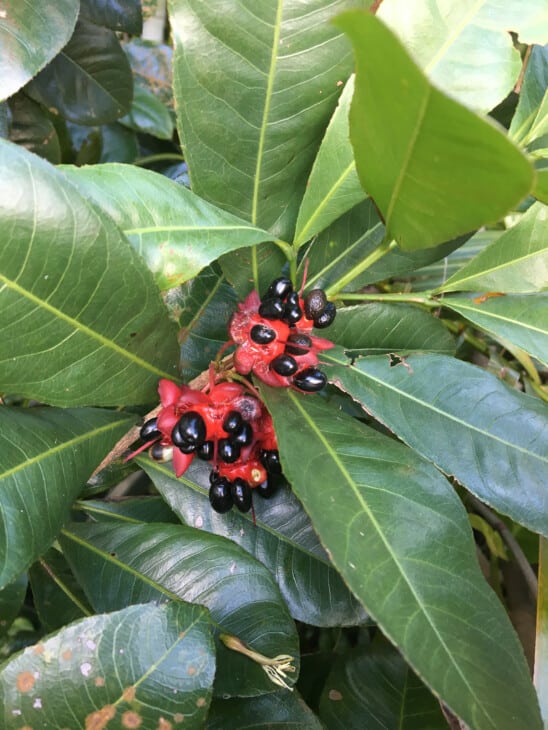
The bird’s eye bush (Ochna serrulata) is called names like Mickey Mouse bush, the small-leaved plane, and carnival Ochna. This ornamental plant is native to South Africa and can grow between three and six feet tall. In spring, these shrubs are covered in lovely yellow flowers. Once the yellow petals have fallen, the bush starts to transform.
The sepals of the flower remain intact and change to a red color. Five to six fruit form on this red star-shaped flower remnant. As the fruit ripens, they turn black and look like the black eyes for which the plant is named.
Planting a bird’s eye bush provides beautiful color to the garden and attracts birds. While it is cultivated for its highly attractive flowers and fruit in many countries, it has been declared a weed in Australia and New Zealand, so it may not be sold there. Always check the plant status for your area before planting a bird’s eye bush.

